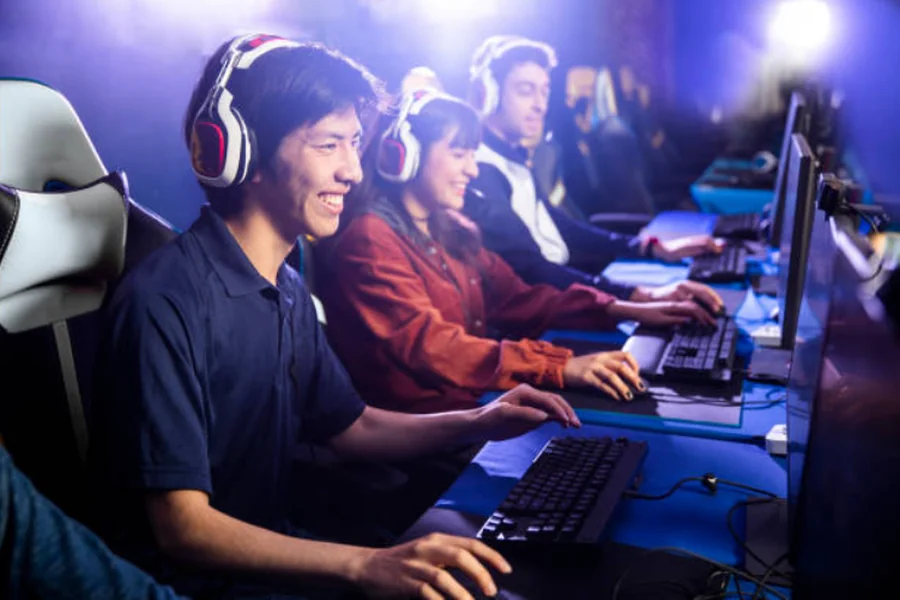Building exceptional games requires exceptional talent, but assembling that talent doesn’t have to drain your studio’s resources. Hire game artist professionals strategically, and you’ll discover how the most successful studios build their creative teams while maximizing both quality and efficiency within strict budget control. This approach transforms game development from a resource-intensive gamble into a calculated investment with predictable returns.
The True Cost of Talent Acquisition: Why Traditional Hiring Is Bleeding Studios Dry
Traditional hiring practices in the gaming industry operate on outdated assumptions that no longer reflect market realities. The standard approach of maintaining large, permanent art departments creates massive overhead costs that extend far beyond base salaries. When studios positions full-time, they’re committing to ongoing expenses that include benefits, equipment, office space, training, and administrative overhead.
The hidden costs accumulate quickly. A $70,000 annual salary becomes a $120,000+ yearly investment when factoring in benefits, workspace, software licenses, and management time. Multiply this across a 15-person art team, and you’re looking at nearly $2 million in annual costs before producing a single asset.
More critically, traditional hiring locks studios into fixed costs regardless of project needs. During pre-production phases, when concept work dominates, paying full salaries for 3D modelers and animators represents pure waste. Conversely, during crunch periods when specialized skills are desperately needed, existing teams often lack the specific expertise required, forcing costly delays or compromised quality.
The financial bleeding extends beyond direct costs. High-talent artists command premium salaries in competitive markets, and retaining them requires constant investment in equipment upgrades, professional development, and competitive compensation adjustments. Studios that can’t keep pace lose their best talent to competitors, creating expensive recruitment cycles that further drain resources.
Agile Team Assembly: Scaling Your Creative Force Based on Project Phases
Smart studios have adopted agile team assembly strategies that match their creative workforce to actual project requirements. This approach treats talent acquisition as a dynamic process rather than a static organizational chart. During concept phases, studios need visionary artists who can rapidly iterate on ideas and establish visual direction. As projects move into production, the focus shifts to specialists who can execute specific asset types with precision and efficiency.
The key lies in understanding project phases and their unique talent requirements. Pre-production demands concept artists, art directors, and creative generalists who can explore multiple directions quickly. Production phases require specialized professionals: character artists, environment designers, technical artists, and animators. Post-production and polish phases need different specialists focused on optimization, effects, and final quality assurance.
This phased approach allows studios to maintain lean core teams while bringing in specialized talent exactly when needed. Core teams typically include art directors, technical leads, and pipeline specialists who provide continuity and maintain creative vision. Specialized roles get filled by carefully selected professionals who contribute their expertise during relevant project phases.
Successful agile assembly requires forward planning and clear role definitions. Studios must map their project timelines against required skill sets, identifying when specific expertise will be needed and for how long. This planning enables proactive talent acquisition rather than reactive scrambling when deadlines approach.
Quality Control Without Compromise: Vetting Artists Before They Touch Your Vision
Quality control begins long before artists start working on your project. The most effective studios have developed comprehensive vetting processes that evaluate both technical skills and cultural fit. This upfront investment in assessment prevents costly revisions, missed deadlines, and creative conflicts that can derail entire projects.
Technical assessment should evaluate portfolio quality, relevant experience, and specific skill sets required for your project. However, technical competence alone doesn’t guarantee success. Artists must also understand your creative vision, work effectively within your communication systems, and deliver consistent quality under pressure.
Effective vetting processes include multiple evaluation stages:
- Portfolio Review: Assess technical skills, artistic style, and relevant experience
- Technical Tests: Evaluate specific competencies required for your project
- Communication Assessment: Ensure clear understanding of requirements and feedback
- Timeline Evaluation: Confirm realistic delivery schedules and availability
- Reference Verification: Validate past performance and professional reliability
The vetting process should also evaluate an artist’s adaptability and problem-solving abilities. Game development involves constant iteration and unexpected challenges. Artists who can adapt to changing requirements while maintaining quality standards prove invaluable throughout development cycles.
Budget Allocation Mastery: When to Invest Big vs. When to Stay Lean
Strategic budget allocation separates successful studios from those that burn through funding without achieving their creative goals. The key principle involves investing heavily in elements that define your game’s identity while maintaining efficiency in supporting areas. This doesn’t mean cutting corners on quality, but rather being intentional about where premium talent provides maximum impact.
Hero assets and signature elements deserve premium investment. If your game features distinctive character designs, invest in top-tier character artists. If environments drive the player experience, allocate significant resources to world-building specialists. These investments create the visual elements that differentiate your game in a crowded marketplace.
Supporting assets can often be handled more efficiently without sacrificing quality. Background elements, props, and secondary characters typically don’t require the same level of specialized expertise as hero assets. Smart studios when they hire game artist talent for these roles focus on efficiency and consistency rather than groundbreaking creativity.
Budget allocation also involves timing considerations. Early-stage concept work often provides the highest return on investment, as strong initial direction prevents costly revisions later. Conversely, optimization and polish work, while important, typically offers lower returns and can be handled more economically.
The most effective approach involves creating budget tiers that match investment levels to impact potential. Tier-one investments go toward elements that directly influence player perception and game differentiation. Tier-two investments cover essential but less visible elements. Tier-three investments handle necessary but routine work efficiently.
Communication Frameworks That Keep Distributed Teams Aligned
Effective communication frameworks make the difference between cohesive creative vision and expensive creative chaos. When working with distributed talent, studios must establish clear communication protocols that ensure everyone understands expectations, deadlines, and quality standards. Poor communication leads to revisions, missed deadlines, and frustrated team members.
Successful communication frameworks establish multiple touchpoints throughout project phases. Initial briefings should cover creative vision, technical requirements, timeline expectations, and delivery formats. Regular check-ins allow for course corrections before problems become costly. Final reviews ensure deliverables meet standards before integration into the main project.
Documentation plays a crucial role in maintaining consistency across distributed teams. Style guides, technical specifications, and reference materials should be easily accessible and regularly updated. Clear documentation reduces misunderstandings and provides objective standards for evaluating deliverables.
Modern collaboration tools enable real-time feedback and iteration cycles that were impossible just a few years ago. Cloud-based project management systems, version control platforms, and instant communication channels allow distributed teams to work as cohesively as in-person groups. However, tools alone don’t create effective communication—they must be implemented within structured frameworks that define roles, responsibilities, and procedures.
Timeline Optimization: Matching Artist Availability to Critical Milestones
Timeline optimization requires understanding both your project’s critical path and your artists’ availability patterns. The most efficient studios plan their talent acquisition around key project milestones, ensuring that specialized skills are available exactly when needed. This approach minimizes idle time while preventing bottlenecks that can delay entire projects.
Critical milestone mapping involves identifying dependencies between different asset types and production phases. Character designs must be completed before animation work begins. Environment concepts need approval before detailed modeling starts. Understanding these dependencies allows studios to sequence their talent acquisition for maximum efficiency.
Artist availability patterns vary significantly across different specializations and experience levels. Top-tier specialists often book months in advance, requiring early planning and scheduling. Mid-level artists typically offer more flexibility but may have other commitments that affect their availability. Understanding these patterns helps studios plan realistic timelines that account for talent acquisition lead times.
Buffer planning provides insurance against unexpected delays or availability changes. Smart studios build contingency time into their schedules and maintain relationships with backup artists who can step in if primary choices become unavailable. This redundancy prevents single points of failure that could derail project timelines.
Success Metrics: Measuring ROI on Your Creative Investments
Measuring return on investment for creative work requires both quantitative and qualitative metrics that capture the full value of artistic contributions. While creative work doesn’t always lend itself to simple numerical analysis, successful studios have developed frameworks for evaluating the effectiveness of their talent investments.
Direct cost metrics provide the foundation for ROI analysis. These include hourly rates, project completion times, revision cycles, and total project costs compared to initial budgets. However, direct costs only tell part of the story. Quality metrics, timeline adherence, and creative impact provide equally important insights into investment effectiveness.
Quality metrics should evaluate both technical execution and creative contribution. Technical metrics might include polygon efficiency, texture optimization, and animation smoothness. Creative metrics are more subjective but equally important, covering style consistency, visual impact, and alignment with creative vision.
Long-term value considerations extend beyond individual project metrics. Artists who consistently deliver high-quality work on schedule provide ongoing value through repeat collaboration opportunities. Building relationships with reliable talent creates strategic advantages that compound over multiple projects.
The most comprehensive success measurement involves tracking artist performance across multiple engagements, identifying those who consistently exceed expectations and provide exceptional value. These relationships become strategic assets that contribute to long-term studio success and competitive advantage in an increasingly demanding marketplace.






